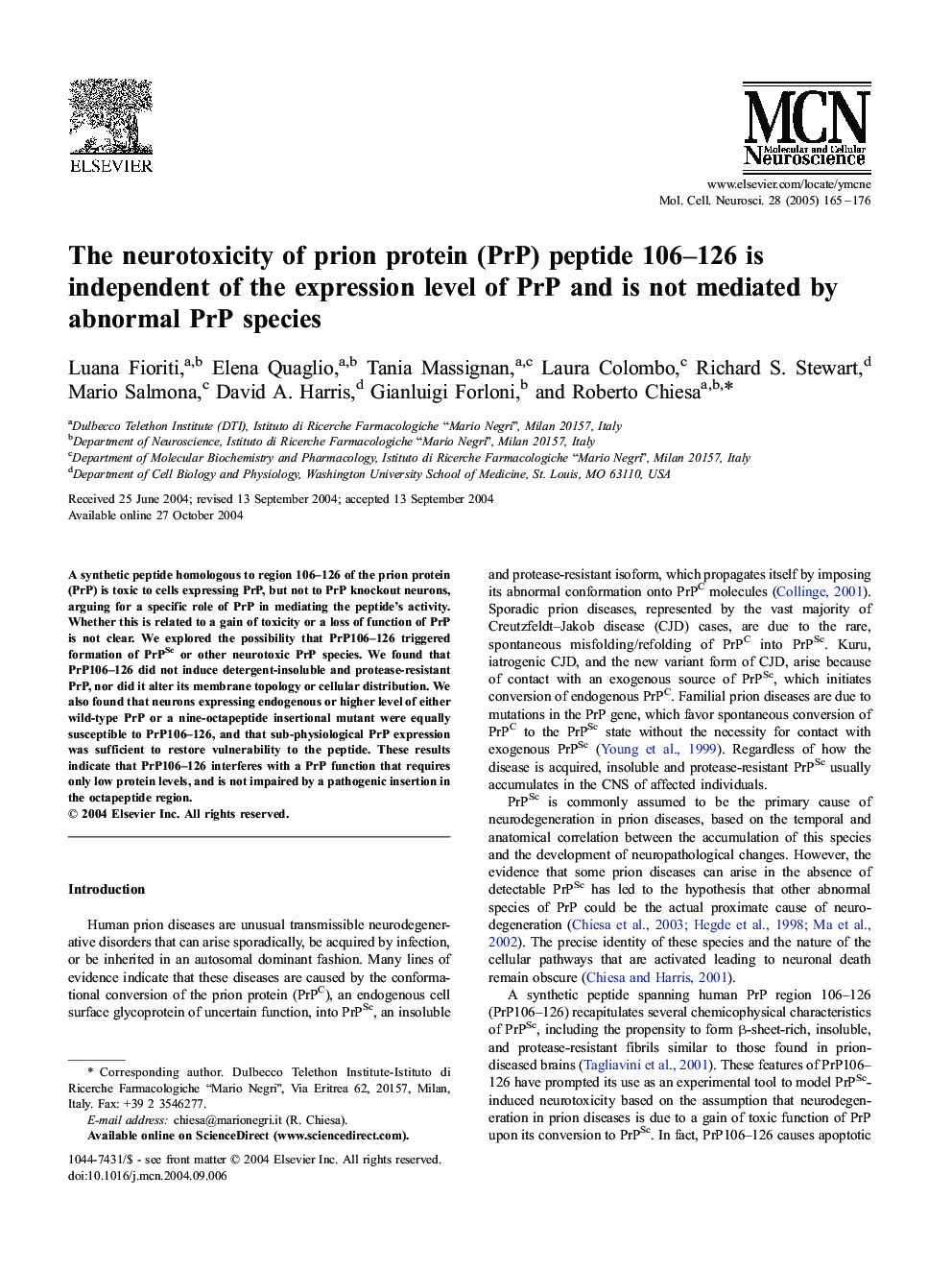| Article ID | Journal | Published Year | Pages | File Type |
|---|---|---|---|---|
| 10956937 | Molecular and Cellular Neuroscience | 2005 | 12 Pages |
Abstract
A synthetic peptide homologous to region 106-126 of the prion protein (PrP) is toxic to cells expressing PrP, but not to PrP knockout neurons, arguing for a specific role of PrP in mediating the peptide's activity. Whether this is related to a gain of toxicity or a loss of function of PrP is not clear. We explored the possibility that PrP106-126 triggered formation of PrPSc or other neurotoxic PrP species. We found that PrP106-126 did not induce detergent-insoluble and protease-resistant PrP, nor did it alter its membrane topology or cellular distribution. We also found that neurons expressing endogenous or higher level of either wild-type PrP or a nine-octapeptide insertional mutant were equally susceptible to PrP106-126, and that sub-physiological PrP expression was sufficient to restore vulnerability to the peptide. These results indicate that PrP106-126 interferes with a PrP function that requires only low protein levels, and is not impaired by a pathogenic insertion in the octapeptide region.
Related Topics
Life Sciences
Biochemistry, Genetics and Molecular Biology
Cell Biology
Authors
Luana Fioriti, Elena Quaglio, Tania Massignan, Laura Colombo, Richard S. Stewart, Mario Salmona, David A. Harris, Gianluigi Forloni, Roberto Chiesa,
